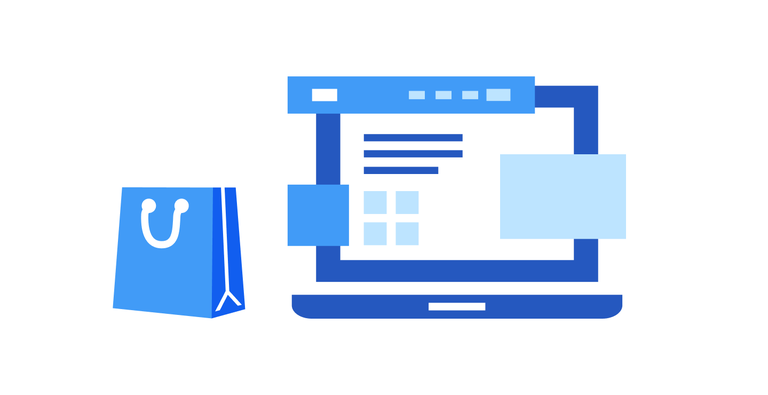Insights
Transform Your eCommerce Ideas into Productive Strategies by Starting with the Right Approach
When kicking off a new eCommerce project, you need a plan to guide it.
- Article
- 3 MIN READ
- Jan 18, 2021
-
 Apply Digital
Apply DigitalStaff

Summary
Regardless of your business or industry, when kicking off a new eCommerce project, you need a plan to guide it. Whether your project is about improving customer experience, boosting revenue, acquiring new leads, or something else, having a clear plan in place at the very beginning is critical to its success as it sets up a sense of direction for your team.
At Apply Digital, we can often see where our new clients have rushed their past eCommerce projects and neglected planning, thus failing to get alignment across all their business units and stakeholders.
The result: an ineffective project that suffers from no clear direction, no distinct ownership, few decipherable results, and a lack of discerning post-project insights.
Sometimes a project doesn’t even reach completion, since seeing it through to success requires constant team re-alignment and support. It’s very difficult for this to happen without a plan, and is especially detrimental to prioritization, resourcing, and stakeholder buy-in for future projects.
Define and align
Though there are multiple ways to get to a result, how do you know which is optimal? The answer is in what plan you follow, but you first must take a step back and understand the elements that make up the fundamental goal of your project. It’s worth starting with a mission by defining questions like:
Why are we doing this project over another project?
What do we want to accomplish in the short-term vs. the long-term?
What business goals does this idea align with?
While not a silver bullet, asking these questions helps you narrow down a framework to follow.
Identify the right approach
Once you know the fundamental goal of your eCommerce project, the next step is to choose a framework for how to get it done. For example, if the goal relates to making it easier for your customers to buy, we recommend using a customer experience framework to guide you. If, however, the goal is focused on making more money, take a slightly different approach guided by a revenue framework.
Let’s delve into more detail about these two approaches…
1. Customer experience strategies
Often eCommerce teams fill this bucket with almost every task on their wishlist and roadmap. It acts like a catch-all category for the 'make it look better' goal. Unfortunately, this ends up cluttering your success measurements and muddying prioritization tasks.
A few examples of long-term ideas we typically see guided by an eCommerce customer experience framework are:
Checkout process optimization*
Shipping speed and/or carrier options
Alternate payment options
Live chat with customer service agents
Smart FAQs through AI chatbots
Notifications when desired products are back in stock
*Many relate the checkout process to generating revenue, but because checkout optimization ultimately reduces obstacles and makes it easier for your customers to complete a purchase, we recommend evaluating it based on customer experience KPIs.
2. Revenue-driving strategies
The opposite of Customer Experience Strategies, this bucket can also have numerous inappropriate tasks tossed into it. The reasoning mistake: “Everything must make money.” While not wrong, as mentioned above, some strategies are better implemented with clarity around revenue-oriented KPIs than others.
A few ideas typically guided by a revenue-driving framework include:
Short-term:
Free shipping promotion**
Discount promotion
Product bundle discount
Long-term:
Loyalty/reward program**
Cross-sells and upsell to drive higher average order value
Product subscription discounts
**Free shipping and loyalty programs are often treated as marketing campaigns. However, while Marketing may pay for it, the overall purpose is to drive revenue and so should reflect this, all the way from implementation planning to KPIs.
Redefine and pivot
Can any of these strategies be both Revenue-driven and Customer Experience-oriented, you might ask? If it’s difficult to determine, we encourage you to choose one framework as your primary method for planning and set up your success measurements based on that.
If, however, you get partway through planning and find the approach you chose isn’t working as smoothly as it should, don’t be afraid to make adjustments. The ultimate goal for such framework thinking is to take all your ideas from various sources (presentations, goals, tools, emails) and organize them in a structured way that allows for better planning overall.
All aboard
While starting with a plan doesn’t guarantee the success of a project, it’s a great tool to align your entire organization to your eCommerce growth program. It also helps you:
Put the right people on the project team (a UX team vs. a BA team)
Set meaningful success measures (quality of customer vs. quantity of revenue)
Get buy-in from the stakeholders that truly matter
Decouple from unrelated non-eCommerce marketing or IT strategies
Make it easier to create more effective digital roadmaps for the future
So, during your next strategy session, take a look at all of your eCommerce-related projects and go through the exercise of assigning them to one of these two areas. Refine them based on their success measurements and put them into action according to their appropriate plan.
At Apply Digital, we help businesses define and plan their eCommerce approach so they can work smarter and more effectively. Contact us at hello@applydigital.com to find out how we can help you move your business forward.

Partner with us
Together, we can deliver innovative solutions and drive your digital change journey.
Let's connectKeep learning

6 Ways to Measure ROI of Digital Change in B2B Manufacturing
